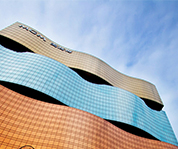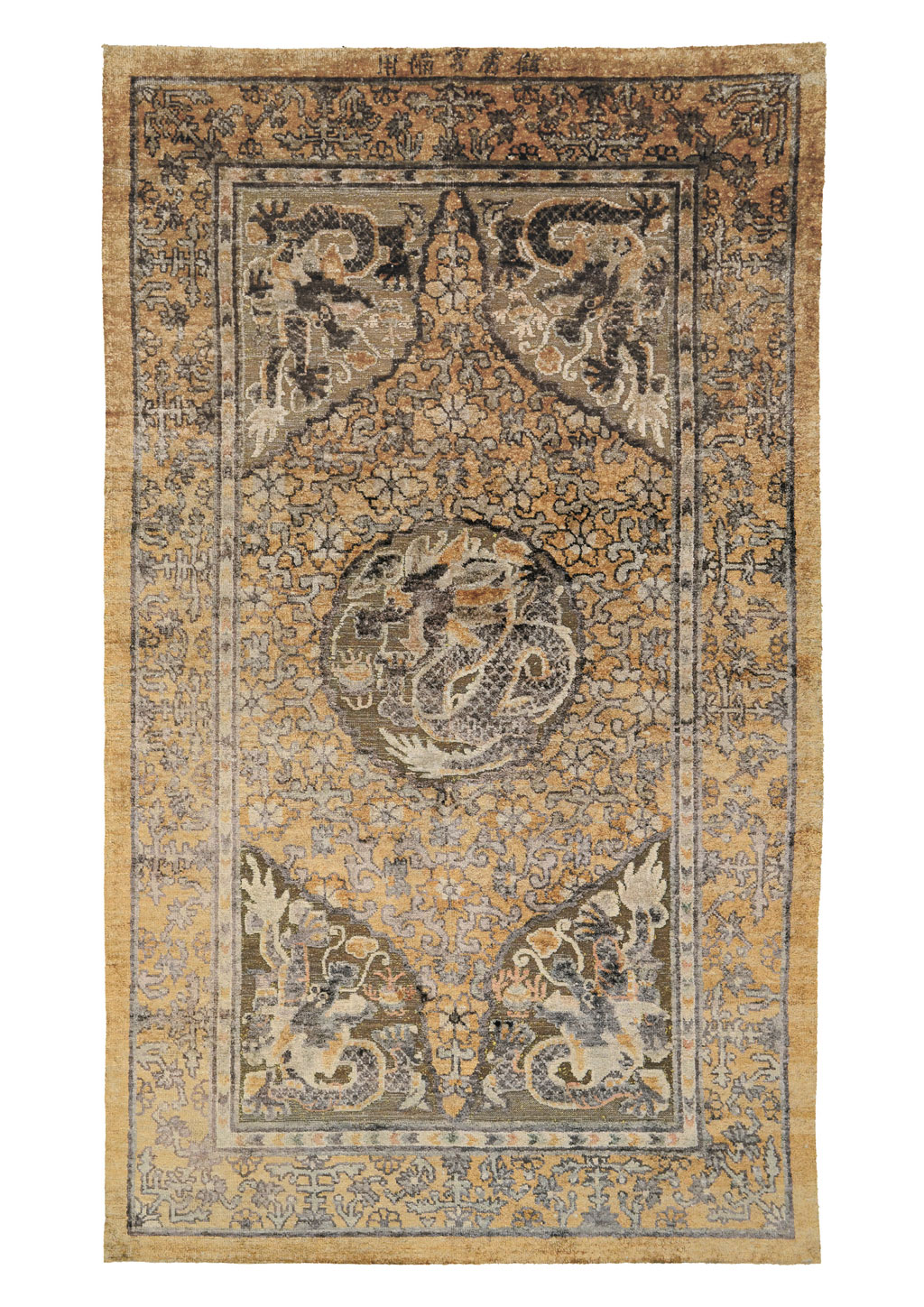Imperial Workshops of Xinjiang
China
Qing dynasty (1644-1911)
Daoguang period (1820-1850)
213 x 127 cm
Silk pile, gilded copper threads
Cotton warp and weft
Excellent condition
The inscription reads:
Chuxiugong Beiyong
Made for the Palace of Gathering Excellence
Published:
Imperial Court Carpets from the Qing Dynasty, Orientalis, 2007
Dragons, Orientalis, 2009
Exhibited:
Mar 12 – Apr 30, 2009 – Danon Gallery, New York
D R A G O N S
Nine Imperial Court Carpets form the Qing Dynasty
Sep 1, 2010 - Mar 31, 2011 - Danon Gallery, New York
THE SECRET OF THE GOLDEN FLOWER
Carpets from the Qianlong Palace
Provenance:
Collection of Mrs. Massarotti, Rome
IMPERIAL CARPETS – THE MEANING OF FIVE AND NINE
The main symbol on a carpet usually only occurs five or nine times, like five or nine dragons, five lions, nine phoenixes. Five and nine are two very important numbers within the ancient Chinese numerical description of the world.
Five (Wu) connotes the four cardinal points plus the center, and reflects the Five Agents - Wood, Fire, Earth, Metal, and Water. Each Agent corresponds a spatial direction, a season, a quadrant of the sky symbolized by an animal, a color and, by extension, any element in life that may be arranged within a quinary system.
Representing the fullest expression of yang, Nine (Jiu) is closely associated with heaven in that it evoked infinity, partly because it was the product of three times three, the most basic unit of three being heaven, earth and man, and partly because the number nine was homophone with the word Jiu meaning eternity.







